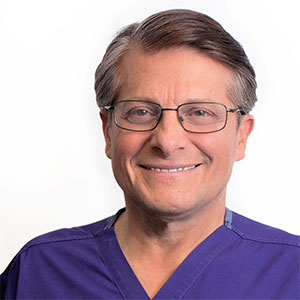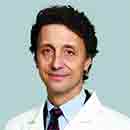'How am I going to do it?' A cardiologist helps nurses eat healthier and take better care of themselves
Published in Health & Fitness
PITTSBURGH — Nurses are charged with other people's health, but they often do not prioritize their own.
The stresses of their jobs and difficulties inherent in rotating shift work may result in increased risk of cardiovascular disease and other long-term illnesses, multiple studies have shown.
"There's recognition that our nurses ... do not take very good care of themselves because of the work schedules and the challenges, the stresses that come with that," said Indu Poornima, a cardiologist at Allegheny General Hospital on Pittsburgh's North Side and the medical director of the Allegheny Health Network Women's Heart Center.
Chronic diseases, such as obesity, diabetes and high blood pressure, are common among nurses, she said.
For that reason, she wanted to start a program for nurses focused on the prevention of cardiovascular disease.
Coincidentally, an AHN patient who had undergone multiple surgeries for coronary artery disease adopted a plant-based diet. He became so convinced of the benefits of his vegan regimen that he gave an anonymous $100,000 gift to AHN to promote plant-based eating.
That's how the AHN Cardiovascular Prevention Program began.
"It just came together that I wanted to do a program for the nurses," Poornima said. "He wanted to introduce a plant-based diet program to a wider audience and essentially gave us some financial support to do this."
The program aims at overall lifestyle modification with a focus on diet. It incorporates cooking demonstrations and tips on plant-based eating; regular virtual presentations and discussions on exercise, nutrition, smoking, alcohol cessation, sleep and stress management; self-monitoring through pedometers and food logs; and a free, one-year gym membership.
The six-month program also included medical testing at its advent in April, measuring height, weight, body-mass index, blood pressure, cholesterol levels, blood glucose and an inflammatory marker. Those characteristics will be measured again at the end of the program to gauge changes.
Poornima, who is a lifelong vegetarian herself, said she will also administer a questionnaire after 12 months to see if participants have kept up with the program's recommendations.
"You can sort of push people," she said, "but ultimately there needs to be some intrinsic motivation."
The goal of recruiting 100 nurses was fulfilled quickly, in five days, Poornima said. There has since been some dropout, and there are currently 85 participants.
Though the program is collecting data, it is not a research program, the cardiologist emphasized. It does not mandate any specific milestones for the nurses or require for them to become 100% vegetarian.
"It's easy to get discouraged when you have set goals," she said. "Showing some sort of a positive change is all we are looking for."
A participant might go from zero vegetarian meals a week to two, or from two to 10. Nurses can determine their own trajectories, Poornima said.
A learning process
On a recent afternoon at Allegheny General, program participants had gathered for a combination cooking demo and lunch. Chef Mario Aponte, from the hospital's dining service provider, Cura Hospitality, demonstrated how quick and easy it is to prepare a vegetable stir-fry.
Kileigh Barnes, a nurse who has a family history of heart disease, said she initially did not want to be in the program because she thought she would have to become a vegetarian.
"I was very intimidated because I'm like, 'How am I going to do it?'" she said.
But because many of her coworkers were participating, she joined and even recruited others.
"It's like a whole entire floor of us on the program," she said.
Cali Clark, a cardiology fellow at the hospital, understands those initial fears. She is now a vegetarian — and has spoken to the group about her experiences — but took a gradual approach to changing her diet.
She decided to explore vegetarianism in medical school when she learned about its cardiovascular benefits. But she said it was hard to get over her initial resistance.
"Honestly, it was scary to not cook with meat," she said. "How do you make meals? What do you center it around?"
Clark grew up in the Midwest, she said, and ate typical American meals. "We ate meat with every meal and twice on Sundays."
She and her husband started slowly, with meatless Mondays, when they'd perhaps have a vegetarian burrito bowl. Gradually, she built up a battery of tested recipes, and increased the number of meatless meals she ate.
She made the complete switch when she realized how much better she felt.
"I felt like I had more energy, I didn't require as much caffeine and got better sleep," she said.
She also likes to explain to her patients the benefits of a plant-based diet, emphasizing that making the switch is a learning process.
"It's just education," she said.
Putting others first
Barnes and her colleague, Katie Rapp, spoke of the importance of stress management for overall health. They noted that the strains of the job could affect their eating habits.
"I think we're very giving and I know I am very guilty of putting myself last or putting myself on the back burner in order to help others," Rapp said.
At the end of the day, she might realize, "Oh, did I even have a sip of water today?"
Barnes, who works with cardiac patients, agreed.
"Stress-wise, I mean we're here to take care of people with heart failure, so we see them at their sickest," she said. "It's just a constant battle of trying to keep your patient out of the hospital. What else can I be doing for this patient? So it does get stressful."
That's why the cardiovascular program includes sessions on mindfulness and meditation.
"We know that lifestyle modification and change in diet cannot occur in isolation," Poornima said, explaining the reasons for the array of educational sessions the program provides.
"If you don't have the knowledge, sometimes it's hard to make changes," she said. "So this is about providing knowledge."
Poornima hopes that the program will provide a model for a program with a wider enrollment in the future.
Mushroom Bok Choy Sushi Bowl
1 small bok choy head
1/2 cup mushrooms
1/2 teaspoon sesame oil
Sea salt to taste
1 cup prepared sushi rice
2 tablespoons ginger carrots or plain shredded carrots
1 tablespoon green onions
1/3 cup red bell pepper
1 piece nori, cut into 2 pieces
1 ounce sesame soy sauce
1/2 teaspoon black sesame seeds
Preheat grill, wok or frying pan to high heat.
Cut baby bok choy in half and leave mushrooms whole.
Season vegetables with sesame oil and sea salt.
Place mushrooms on grill for 30 seconds and then turn. Place baby bok choy on grill and cook 20-30 seconds with mushrooms.
Remove from heat and cool. Be careful not to cook until soft. Boy choy should be bright green and white, and mushrooms should be firm.
Once mushrooms have cooled, cut into quarters.
Place sushi rice in center of bowl. Place carrots, green onions and red pepper along the perimeter. Finish with nori pieces, soy sauce and sesame seeds.
Serves 1.
— Cura Hospitality
©2025 PG Publishing Co. Visit at post-gazette.com. Distributed by Tribune Content Agency, LLC.









Comments